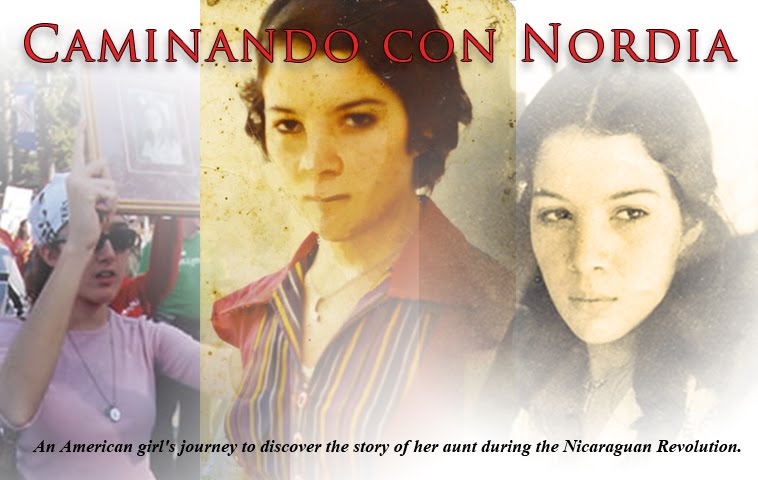What exactly, no one knew for sure. Anticipation soaked the air. In her documentary, "Pictures from a Revolution," Susan Meiselas notes how the response to the casual greeting, "¿Que pasa?" was a foreboding "viene." It comes. The revolution was stirring among the hearts of the Nicaraguan people, yet not fully formed. It was unclear what shape it would take. Even with the uncertainty, there was no denying that something in fact was trembling within the earth, ready to burst free.
In the sing-song accent that graces the tongues of central-americans, a woman sells tomatoes on the streets. Amidst the transaction of goods, details for a secret meeting are also exchanged. The movement may have been gentle and quiet, but the pot was still stirring.
Meiselas journey in Nicaragua unveils the complexities of the build-up and climax of the Sandinista uprising, as well as the bitter aftermath. I really appreciated the rich variety of opinions she was able to record. Being present during both the revolution and again ten years later allowed her to offer a unique perspective. I want to take the time to reflect on these different dynamics that all come to play.
Susan was just a photojournalist who felt obligated to capture what unrolled before her eyes. She explained, "History was being made in the streets and no one knew where it would lead." At one point while she was amid the crowds of people taking pictures in the streets, someone grabbed a bullet shell from the ground that the National Guard had fired and shoved it in her face so the inscription was clear for her to read. This device of death revealed the true architect of their misery: Made in the USA.
There were powers backstage manipulating scene, pulling the strings on their puppets of poverty. Capitalism and communism took a stake in the outcome of the turmoil in this developing country. I was hoping I could focus on learning about the first uprising without having to delve too much into the counter-revolution. My aunt's story ends before the Contras were formed. Unfortunately the history of this battle for justice is tainted with politics. Both phases of history are intertwined and I can't ignore one if I want to understand it all fully. For the Nicaraguan people however, it was never about the larger schisms of the globe. They fought for their own country and their dignity.
One man explained:
"I became aware of the reality for us, the poor, under a government that defends capital interests. That's what gives birth to this conscience to fight for the poor. We are poor and we fight for the others who are still undecided. This is what moved me personally to take that step, to join the struggle."
Slowly but surely I join the struggle. Though the progress is mild these gentle rumblings give rise to more. It is coming.
Viene.

As I read through your entry tonight. I could not but help notice the mix of emotions that were brewing inside me. Anger, sadness, a dreaming hope. And even a feeling of disappointment in myself. For not being as involved as I would like to be in the help of fighting for all people oppressed. Now a days when it comes to purchasing an item. It is thought to have a feeling of support and pride , when the product branded "Made in the USA". Little does the average american consumer rarely think that this slogan is also associated with death, destruction.... OPPRESSION ! .... Thank you for sharing your entry today. It is through your painting of words , that I am learning and getting to understand the struggle of the Nicaraguan people. I very much look forward to your next post. Until then, I pray for your continued journey in exposing the truths, the bringing to light the accounts of the many involved . And the many roles that were played in the revolution.
ReplyDelete